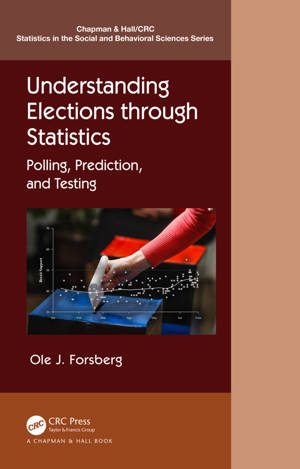
- Afhalen na 1 uur in een winkel met voorraad
- Gratis thuislevering in België
- Ruim aanbod met 7 miljoen producten
- Afhalen na 1 uur in een winkel met voorraad
- Gratis thuislevering in België
- Ruim aanbod met 7 miljoen producten
Omschrijving
Elections are random events. From individuals deciding whether to vote, to people deciding for whom to vote, to election authorities deciding what to count, the outcomes of competitive democratic elections are rarely known until election day...or beyond. Understanding Elections through Statistics: Polling, Prediction, and Testing explores this random phenomenon from two points of view: predicting the election outcome using opinion polls and testing the election outcome using government-reported data.
Written for those with only a brief introduction to statistics, this book takes you on a statistical journey from how polls are taken to how they can--and should--be used to estimate current popular opinion. Once an understanding of the election process is built, we turn toward testing elections for evidence of unfairness. While holding elections has become the de facto proof of government legitimacy, those electoral processes may hide a dirty little secret of the government illicitly ensuring a favorable election outcome.
This book includes these features designed to make your statistical journey more enjoyable:
- Vignettes of elections, including maps, to provide concrete bases for the material
- In-chapter cues to help one avoid the heavy math--or to focus on it
- End-of-chapter problems designed to review and extend that which was covered in the chapter
- Many opportunities to turn the power of the R statistical environment to the enclosed election data files, as well as to those you find interesting
From these features, it is clear the audience for this book is quite diverse. This text provides mathematics for those interested in mathematics, but also offers detours for those who just want a good read and a deeper understanding of elections.
Author
Ole J. Forsberg holds PhDs in both political science and statistics. He currently teaches mathematics and statistics in the Department of Mathematics at Knox College in Galesburg, IL.
Specificaties
Betrokkenen
- Auteur(s):
- Uitgeverij:
Inhoud
- Aantal bladzijden:
- 226
- Taal:
- Engels
- Reeks:
Eigenschappen
- Productcode (EAN):
- 9780367895358
- Verschijningsdatum:
- 29/09/2020
- Uitvoering:
- Paperback
- Formaat:
- Trade paperback (VS)
- Afmetingen:
- 155 mm x 234 mm
- Gewicht:
- 317 g

Alleen bij Standaard Boekhandel
Beoordelingen
We publiceren alleen reviews die voldoen aan de voorwaarden voor reviews. Bekijk onze voorwaarden voor reviews.












